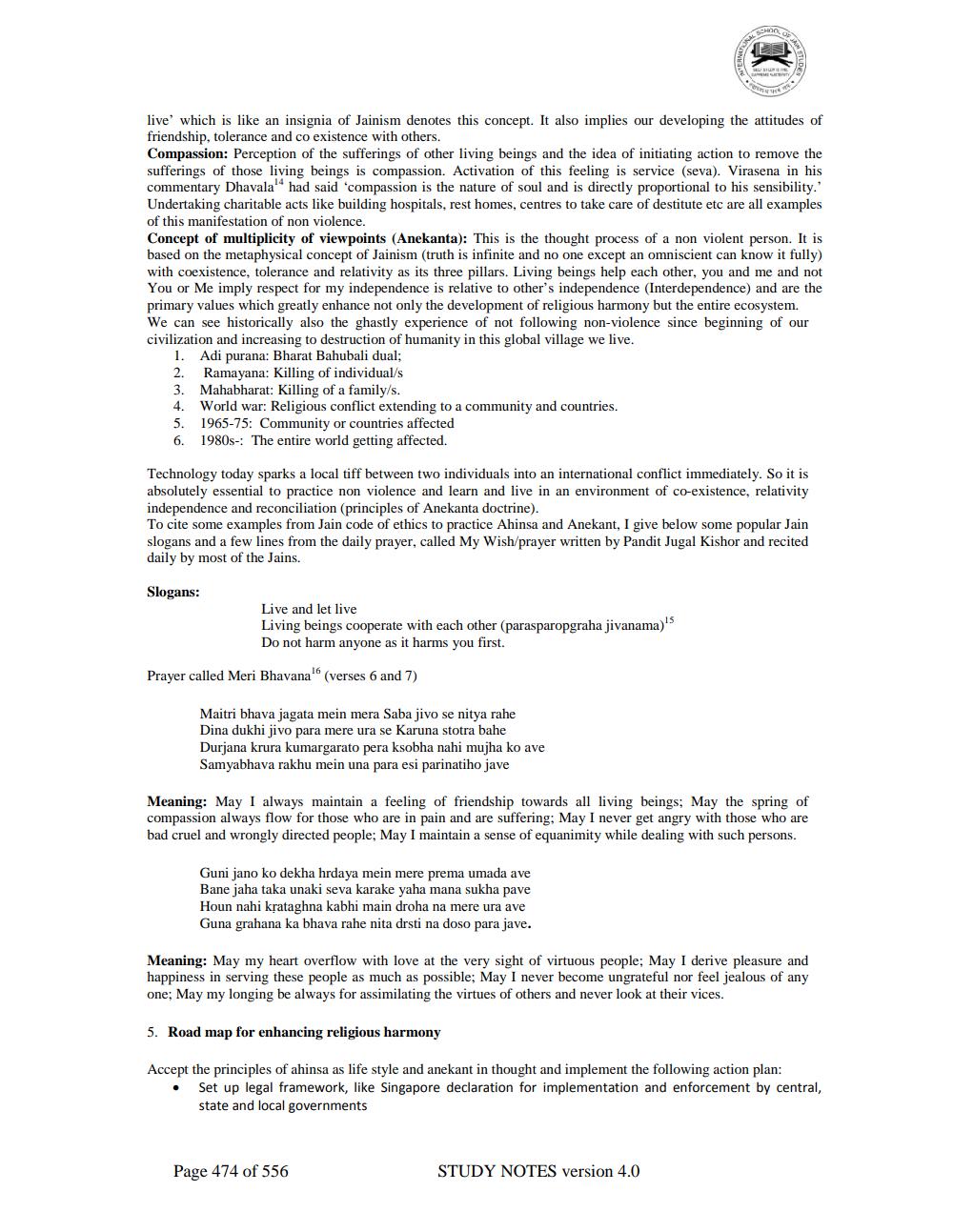________________
live' which is like an insignia of Jainism denotes this concept. It also implies our developing the attitudes of friendship, tolerance and co existence with others. Compassion: Perception of the sufferings of other living beings and the idea of initiating action to remove the sufferings of those living beings is compassion. Activation of this feeling is service (seva). Virasena in his commentary Dhavala! had said 'compassion is the nature of soul and is directly proportional to his sensibility." Undertaking charitable acts like building hospitals, rest homes, centres to take care of destitute etc are all examples of this manifestation of non violence. Concept of multiplicity of viewpoints (Anekanta): This is the thought process of a non violent person. It is based on the metaphysical concept of Jainism (truth is infinite and no one except an omniscient can know it fully) with coexistence, tolerance and relativity as its three pillars. Living beings help each other, you and me and not You or Me imply respect for my independence is relative to other's independence (Interdependence) and are the primary values which greatly enhance not only the development of religious harmony but the entire ecosystem. We can see historically also the ghastly experience of not following non-violence since beginning of our civilization and increasing to destruction of humanity in this global village we live.
1. Adi purana: Bharat Bahubali dual; 2. Ramayana: Killing of individual/s 3. Mahabharat: Killing of a family/s. 4. World war: Religious conflict extending to a community and countries. 5. 1965-75: Community or countries affected 6. 1980s-: The entire world getting affected.
Technology today sparks a local tiff between two individuals into an international conflict immediately. So it is absolutely essential to practice non violence and learn and live in an environment of co-existence, relativity independence and reconciliation (principles of Anekanta doctrine). To cite some examples from Jain code of ethics to practice Ahinsa and Anekant, I give below some popular Jain slogans and a few lines from the daily prayer, called My Wish/prayer written by Pandit Jugal Kishor and recited daily by most of the Jains.
Slogans:
Live and let live Living beings cooperate with each other (parasparopgraha jivanama)' Do not harm anyone as it harms you first.
Prayer called Meri Bhavana (verses 6 and 7)
Maitri bhava jagata mein mera Saba jivo se nitya rahe Dina dukhi jivo para mere ura se Karuna stotra bahe Durjana krura kumargarato pera ksobha nahi mujha ko ave Samyabhava rakhu mein una para esi parinatiho jave
Meaning: May I always maintain a feeling of friendship towards all living beings; May the spring of compassion always flow for those who are in pain and are suffering; May I never get angry with those who are bad cruel and wrongly directed people; May I maintain a sense of equanimity while dealing with such persons.
Guni jano ko dekha hrdaya mein mere prema umada ave Bane jaha taka unaki seva karake yaha mana sukha pave Houn nahi krataghna kabhi main droha na mere ura ave Guna grahana ka bhava rahe nita drsti na doso para jave.
Meaning: May my heart overflow with love at the very sight of virtuous people; May I derive pleasure and happiness in serving these people as much as possible; May I never become ungrateful nor feel jealous of any one; May my longing be always for assimilating the virtues of others and never look at their vices.
5. Road map for enhancing religious harmony
Accept the principles of ahinsa as life style and anekant in thought and implement the following action plan: • Set up legal framework, like Singapore declaration for implementation and enforcement by central,
state and local governments
Page 474 of 556
STUDY NOTES version 4.0




